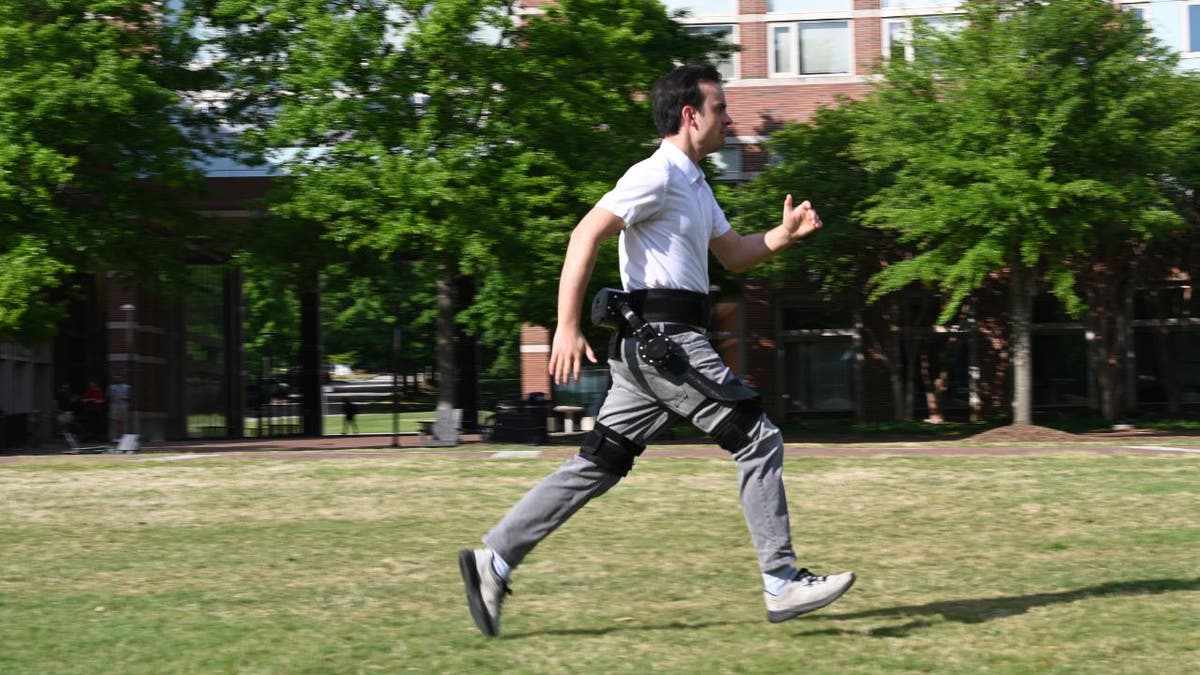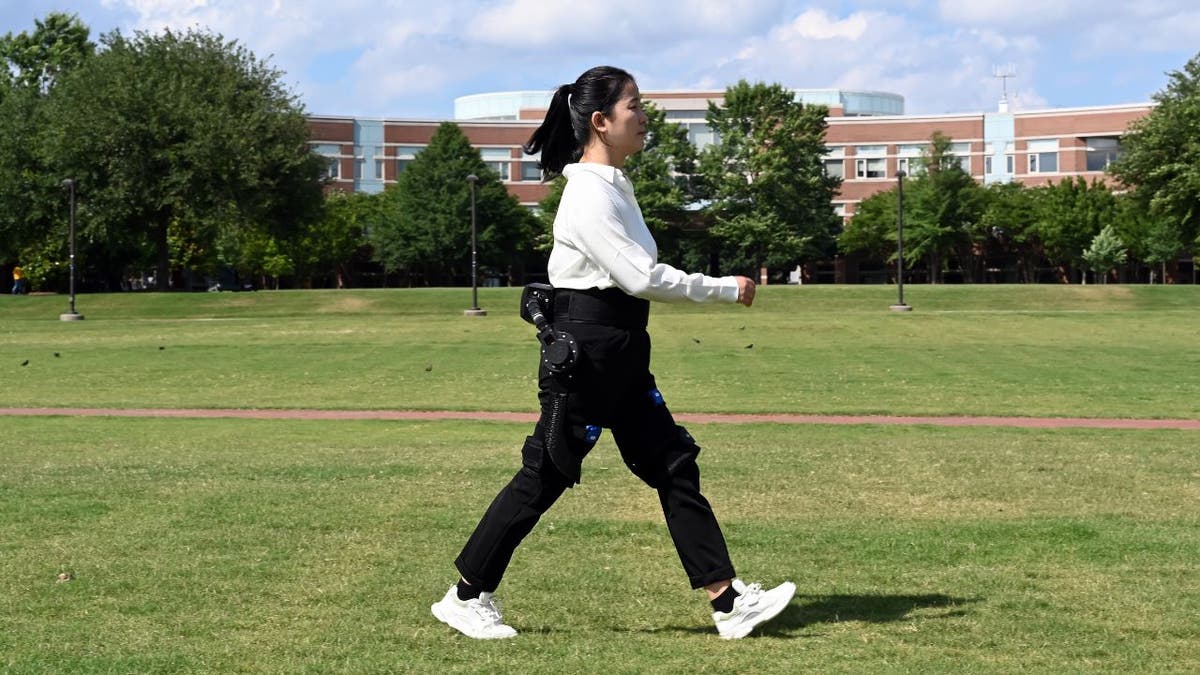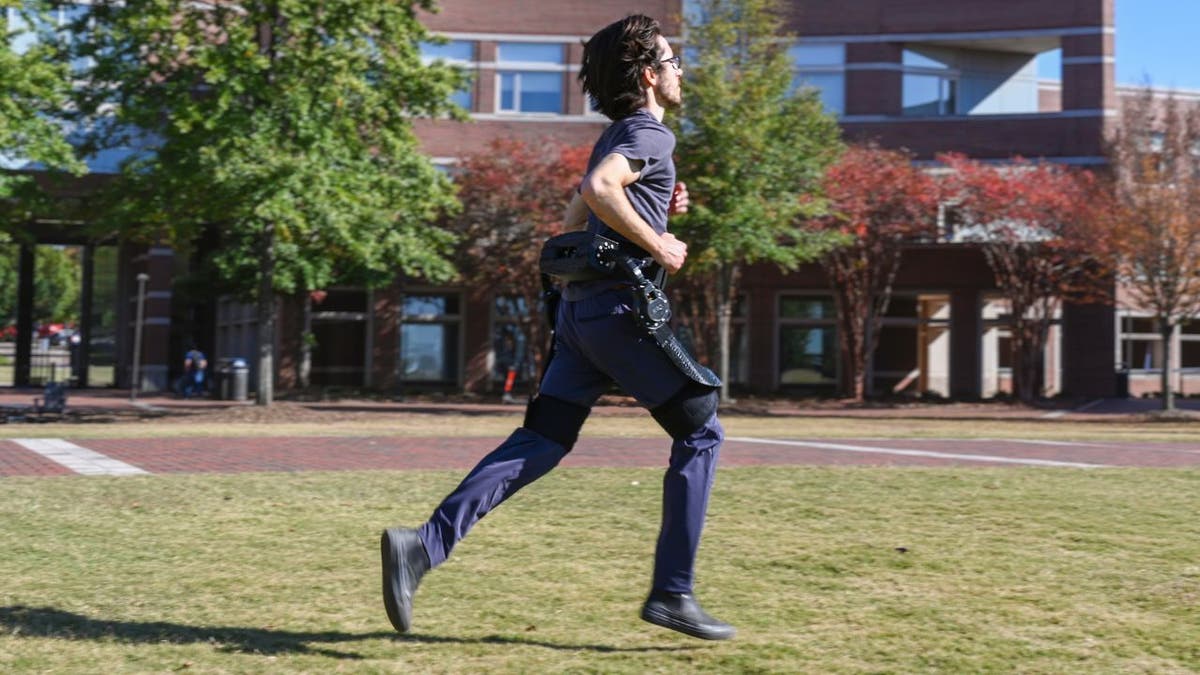'CyberGuy': AI-driven exoskeleton lightens your load, elevates performance
Researchers have created an AI-powered exoskeleton that seamlessly adapts to provide remarkable mobility assistance and energy savings. Kurt Knutsson discusses.
A groundbreaking AI-powered exoskeleton developed by researchers at North Carolina State University and the University of North Carolina at Chapel Hill promises to be a game-changer for individuals with mobility issues.
I showed off a similar technology and got a mountain of messages asking if there was an application for disabled folks. This new exoskeleton could very well be that help.
The wearable technology provides unprecedented energy savings during human movement, making users feel as if they're carrying 26 pounds less. This results in significant improvements in athletic performance and daily life activities.
GET SECURITY ALERTS, EXPERT TIPS - SIGN UP FOR KURT’S NEWSLETTER - THE CYBERGUY REPORT HERE

A man running while wearing an AI-powered exoskeleton (NCSU) (Kurt "CyberGuy" Knutsson)
The power of digital twin simulations
The secret behind this revolutionary exoskeleton lies in sophisticated digital twin simulations, where humans and machines coexist, learning and adapting through millions of iterations to perfect physical assistance. The exoskeleton's AI algorithm, still in development, goes beyond traditional machine learning focused on simulations and games, venturing into a new frontier where technology directly enhances human capabilities.

A woman walking while wearing an AI-powered exoskeleton (NCSU) (Kurt "CyberGuy" Knutsson)
BEST WEARABLE DEVICES TO TRACK YOUR BLOOD OXYGEN LEVELS
Data-driven and physics-informed reinforcement learning
The researchers have embraced data-driven and physics-informed reinforcement learning, an approach that ensures their wearable robots are not just smart but also intuitive, aligning with their mission to improve human mobility and health. This cutting-edge technology maps sensor inputs from the robot to assistive torque without any intermediate steps, enabling end-to-end control.
BEST AMAZON PRIME DAY 2024 EARLY DEALS

A man climbing stairs while wearing an AI-powered exoskeleton (NCSU) (Kurt "CyberGuy" Knutsson)
SKYROCKET TO A HEALTHIER LIFESTYLE WITH THIS GEAR IN 2024
Versatile assistance across multiple activities
One of the most remarkable features of this exoskeleton is its ability to generate synergistic assistance across various activities, including walking, running and stair-climbing. The learned controller automatically adapts to each user's different kinematic patterns, accommodating transitions between activities seamlessly without the need for handcrafted control.
HOW TO REMOVE YOUR PRIVATE DATA FROM THE INTERNET

A man running while wearing an AI-powered exoskeleton (NCSU) (Kurt "CyberGuy" Knutsson)
Unprecedented metabolic cost reduction
The experimental results are nothing short of impressive. Among state-of-the-art portable exoskeletons, the exoskeleton achieved the greatest metabolic cost reduction for walking (24.3%), running (13.1%) and stair-climbing (15.4%). This remarkable achievement stems from the experiment-free and versatile control approach, which eliminates the need for lengthy human tests and handcrafted rules.

Diagram of AI-powered exoskeleton’s results (NCSU) (Kurt "CyberGuy" Knutsson)
SUBSCRIBE TO KURT’S YOUTUBE CHANNEL FOR QUICK VIDEO TIPS ON HOW TO WORK ALL OF YOUR TECH DEVICES
How much will the exoskeleton cost?
We spoke to Hao Su, Ph.D., associate professor at North Carolina State University and the University of North Carolina at Chapel Hill. He is also the director of Biomechatronics and Intelligent Robotics Lab (BIRO), and he told us, "While the exoskeleton price is about $50,000 to $120,000 due to research and development costs and actuators, our approach can significantly reduce the R&D cost by leveraging our efficient learning-in-simulation framework, which allows for rapid design and testing in computer simulations rather than intensive testing on humans and physical robots.
"Looking forward, we plan to make our robots truly affordable and accessible through innovative hardware design, namely low-ratio gears and cost-effective but high-torque electric motors. In about one year, we aim to make our exoskeletons for sale at a price range of $1,500 to $4,000, depending on specific features and manufacturing scale."
Kurt's key takeaways
This AI-powered exoskeleton marks a major advancement in wearable robotics. It offers the rapid development and widespread adoption of assistive robots for both able-bodied and mobility-impaired individuals. This technology has the potential to revolutionize the field of exoskeletons, paving the way for a future where mobility is no longer a barrier and eliminates the hurdles of movement limitations.
What activities or tasks do you struggle with currently that this type of wearable robotic assistance could help make easier or more accessible? Let us know by writing us at Cyberguy.com/Contact.
For more of my tech tips and security alerts, subscribe to my free CyberGuy Report Newsletter by heading to Cyberguy.com/Newsletter.
Ask Kurt a question or let us know what stories you'd like us to cover.
Follow Kurt on his social channels:
Answers to the most asked CyberGuy questions:
- What is the best way to protect your Mac, Windows, iPhone and Android devices from getting hacked?
- What is the best way to stay private, secure and anonymous while browsing the web?
- How can I get rid of robocalls with apps and data-removal services?
- How do I remove my private data from the internet?
Copyright 2024 CyberGuy.com. All rights reserved.





















